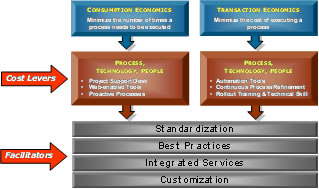 |
|||
 |
|||
 |
|||||

Design & Pilot |
|
|
DSI's solutions are not just proven methodologies but the step-by-step processes for considering each unique aspect of design, integration, deployment, documentation, and support of projects related to the installation and modifications of routers, switches, new servers, PCs and applications. Each solution coalesces the collective wisdom and experience of DSI's deployment engineers, project managers, staging and configuration resources, network and field engineering teams, and support services personnel into one cogent, easy to follow and balanced offerings. DSI's software-enabled process predefines and anticipates the information
to be collected, the check-and-balance of design reviews as well as
the quantity and quality of all required deliverables. DSI takes the
structured results of its documented processes and applies this discovered
information within our TRaDE Tools, a set of highly-integrated tools
and utilities used to automate the integration and installation process.
Simply put, we are looking for places where automation can be useful
because we know that software-enabling these tasks via TRaDE allows
for faster, more accurate execution of project requirements. Once the project charter has been incorporated into the deployment
design process and all practical automation discovered, DSI organizes
a Proof-of-concept and pilot phase. We first want to test and measure
the technical, cross-functional, and logistical aspects of the design.
We pay close attention to every detail. From here we can determine whether
the project design is “stable” and ready for real pilots.
Pilots are designed to begin the process of “ramping” for
the rollout. We are looking for finalize deployment design, modify scope
definitions, project assumptions, and coordination between ever member
of the team. In addition, pilots serve as the beginnings of the training
and project support process. |
|
|
DSI’s is focused on achieving transaction and consumption economics, by leveraging the key elements of People-Process-Technology. Consumption economics minimizes the number of times a process will
need to be executed; using the levers of help desk services, web-based
management tools, and proactive management. Transaction economics reduces
the cost of executing a support process. Here the levers are process
improvement, automation tools, and the training/skills of our field
force. |
 |
| Solutions are tightly
integrated from a PPT perspective, with each component complementing the
others to add business value. Strong emphasis is placed on the use of
technology to reduce labor costs through centralized services and highly
intelligent delivery capabilities. Wherever possible, we develop solutions
utilizing technology to automate processes and fix deployment issues.
|
|